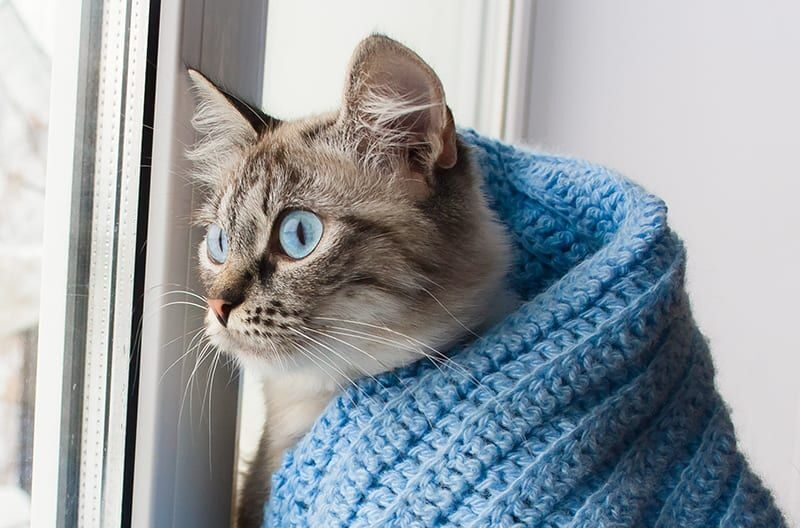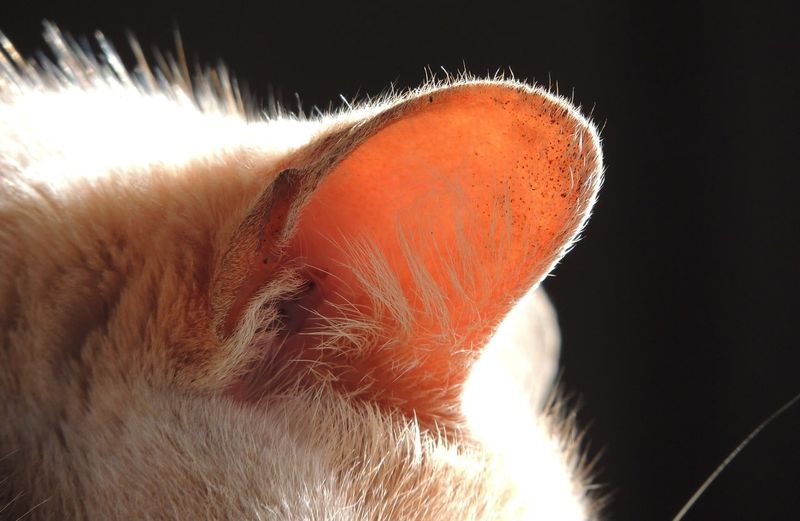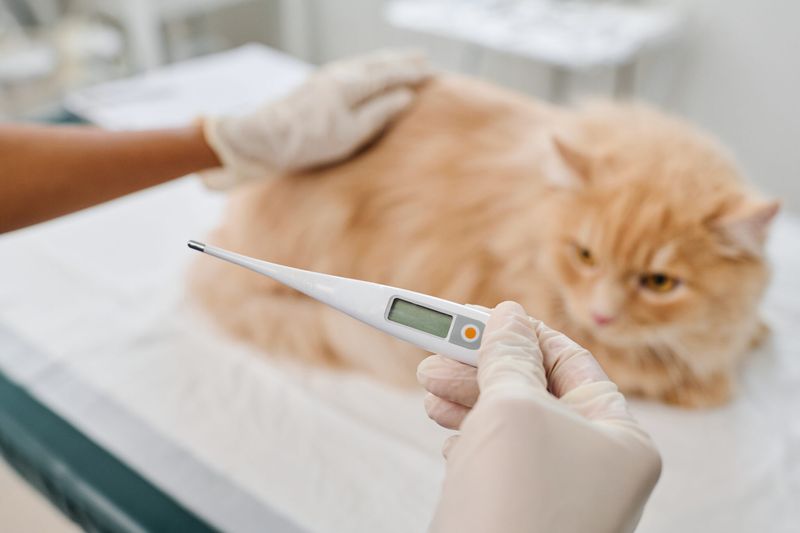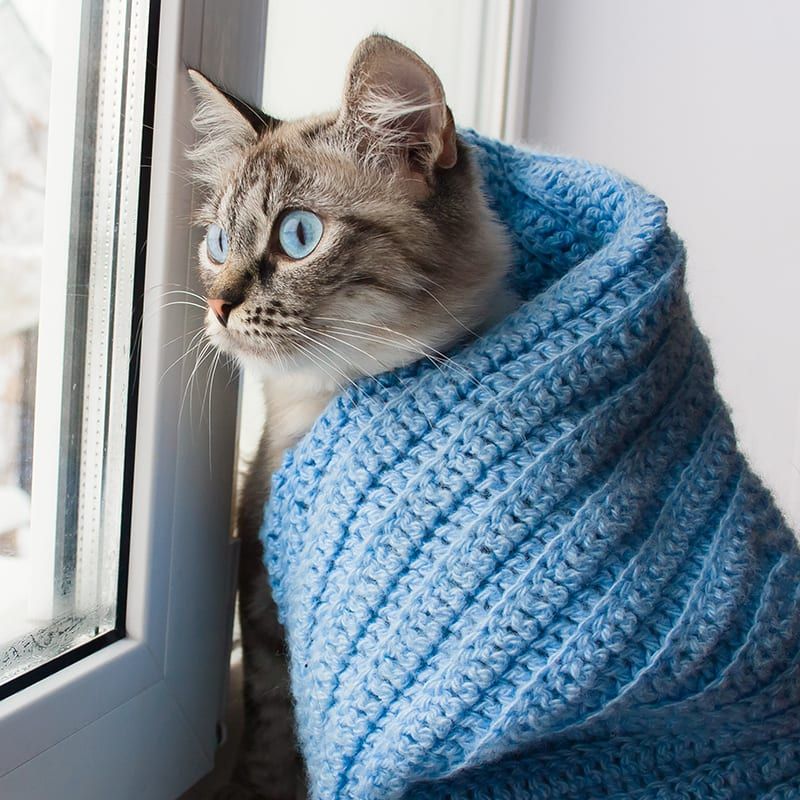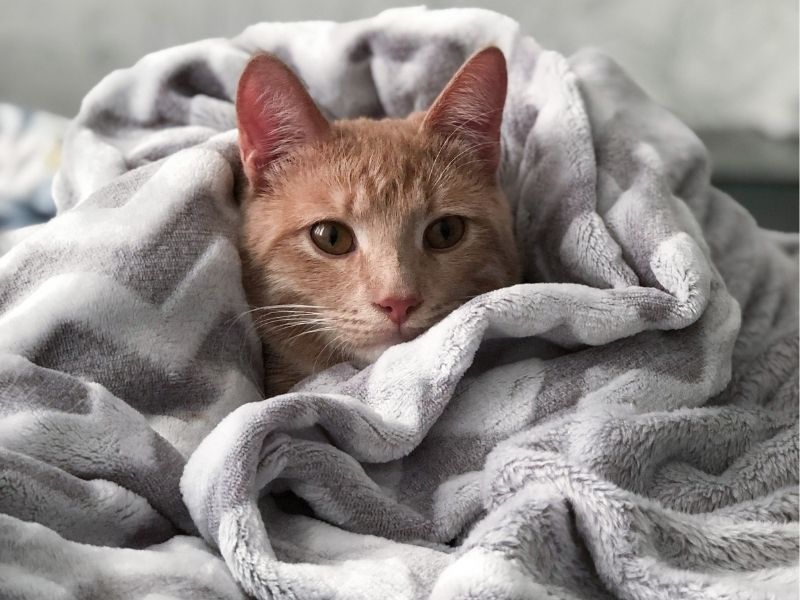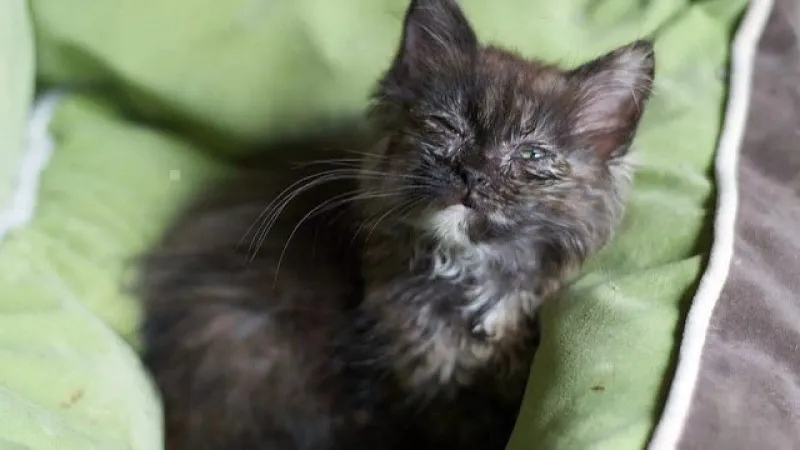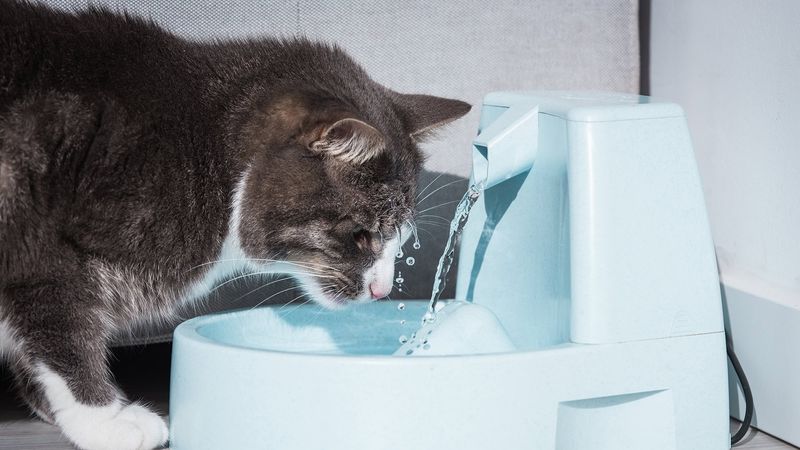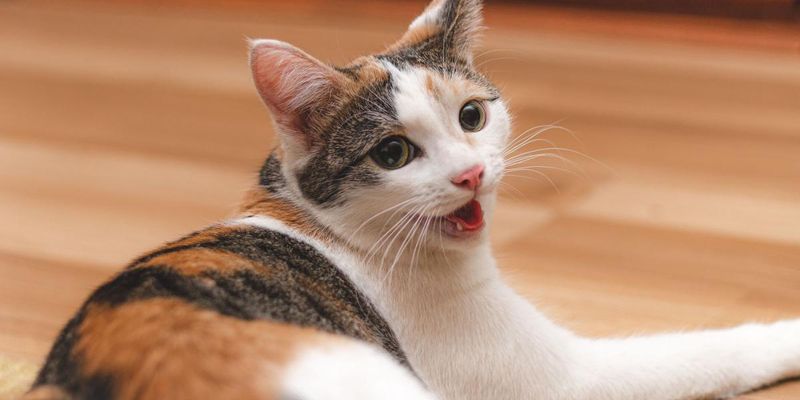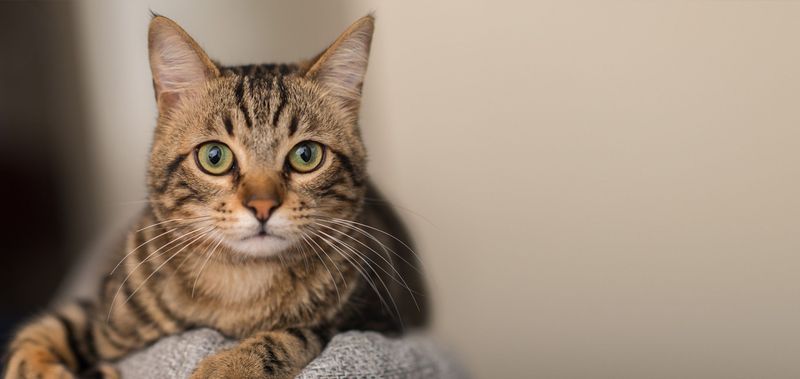📖 Table of Content:
As cat parents, we know our feline friends can be mysterious — often masking their discomfort or illness until it’s more serious. Unlike humans who can tell you they’re not feeling well, cats rely on body language and subtle behavioral changes to communicate that something’s wrong. One such silent signal is fever, a common but often overlooked sign of an underlying health issue.
A fever in cats typically indicates the body is fighting off an infection, inflammation, or another medical condition. While a mild temperature spike may not always be cause for panic, a sustained or high fever can be dangerous if left untreated. Recognizing the signs early can help you get your cat the medical attention they need before things escalate.
In this article, we’ll walk you through eight clear (and sometimes surprising) symptoms that your cat may be running a fever. From unusual behavior to physical changes, these red flags should never be ignored. Whether you’re a seasoned pet owner or new to the feline world, knowing what to watch for can make a world of difference in your cat’s health and recovery.
1. Warm Ears and Paws
At first glance, a cat’s ears or paws might not seem like obvious fever indicators. However, when these areas feel abnormally warm, it could be your first clue something’s off. Temperature regulation in cats often reflects through extremities, which makes this a handy initial check. Don’t rely on touch alone though — it’s not always reliable without comparison to their normal state. Try feeling them during a time when your cat is healthy so you know what’s normal. When combined with other symptoms, warm ears or paws strengthen the suspicion of a fever. It’s a subtle sign, but one that observant cat owners should not overlook.
2. Lethargy and Low Energy
Suddenly finding your energetic cat snoozing all day isn’t always just laziness. In fact, extreme lethargy is one of the most common signs that a cat is running a fever. While it’s normal for cats to nap often, a noticeable drop in energy levels — especially skipping meals or playtime — is worth attention. Some cats may seem disinterested in everything, even you. Instead of seeking attention or play, they might just lie in one spot, eyes half-shut. It’s their body’s way of conserving energy to fight off illness. That quiet withdrawal is a big warning flag that something’s going on internally.
3. Loss of Appetite
Few things are more alarming to a cat owner than a pet that refuses food. Appetite loss is a very strong indicator that your cat may be feeling unwell, including running a fever. While skipping one meal isn’t usually a big deal, refusal to eat for 24 hours or more needs investigation. This is especially urgent in kittens or elderly cats. Food refusal can also lead to other complications like liver issues if not addressed quickly. The body may reject food as it redirects energy toward fighting an infection. Always keep an eye on both food and water intake during a suspected illness.
4. Shivering or Trembling
Despite popular belief, cats don’t usually shiver unless something is wrong. Trembling can indicate your cat is feeling chilled from a fever, even if the environment is warm. This may be mistaken for fear or anxiety, but it’s often physical discomfort. Observe if the shaking persists while they’re resting calmly. Coupled with warm ears or lethargy, shivering can be a very telling symptom. It’s their body’s way of reacting to internal inflammation or elevated temperature. Be gentle and avoid trying to “warm them up” too much, as it may worsen the fever.
5. Hiding More Than Usual
Most cats enjoy the occasional solo retreat, but excessive hiding is a different story. If your cat suddenly vanishes to dark corners or under furniture and stays there for long periods, pay attention. Hiding is a common feline response to stress, pain, or illness. Unlike dogs, cats tend to mask their pain instinctively, making this behavior a potential warning sign. Look for hiding patterns that break from your cat’s usual habits. Are they avoiding contact even with their favorite people or pets? That change in behavior might be your first indication of a brewing fever.
6. Dehydration
Water intake often drops when a cat is unwell, especially if they have a fever. Dehydration is dangerous in itself and can also be a side effect of an elevated body temperature. To check hydration, gently pinch the skin between your cat’s shoulder blades and watch how quickly it returns to place. Slow retraction is a red flag. Dry gums or a sticky mouth can also point to low hydration levels. Left untreated, dehydration can complicate the underlying illness. Make sure fresh water is always available, and consult your vet if your cat refuses to drink.
7. Rapid Breathing or Panting
You rarely see a healthy cat pant — it’s not part of their typical cooling process like it is for dogs. If your cat is breathing faster than normal or seems to be panting, especially while at rest, that’s a big concern. Fever can raise the body’s demand for oxygen, causing this change in breathing. Count the breaths per minute when your cat is calm — anything above 30 can be cause for concern. Other signs include flaring nostrils or labored chest movements. This symptom may also be accompanied by drooling or excessive swallowing. Don’t wait — respiratory changes warrant prompt vet attention.
8. Behavioral Changes
Changes in personality or routine are easy to dismiss, but they can be powerful indicators of illness. For instance, your normally affectionate cat may become withdrawn or even hissy. Alternatively, a usually aloof kitty might become excessively clingy. These shifts often reflect physical discomfort, confusion, or fatigue. Cats don’t typically vocalize pain, but they may express it through mood and movement. Pay attention to unusual vocalizations or restlessness, too. A feverish cat may behave strangely simply because they’re not feeling like themselves.
